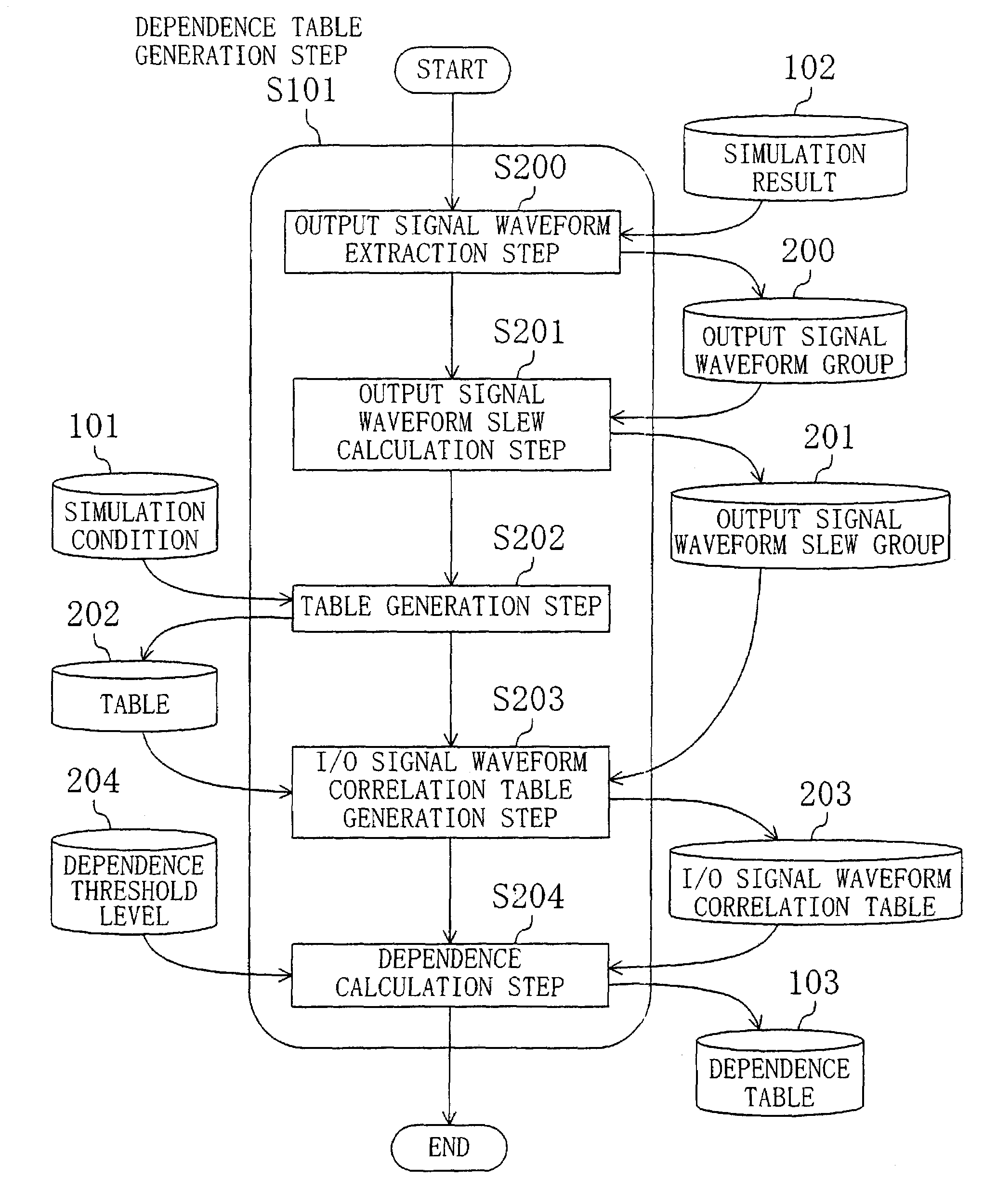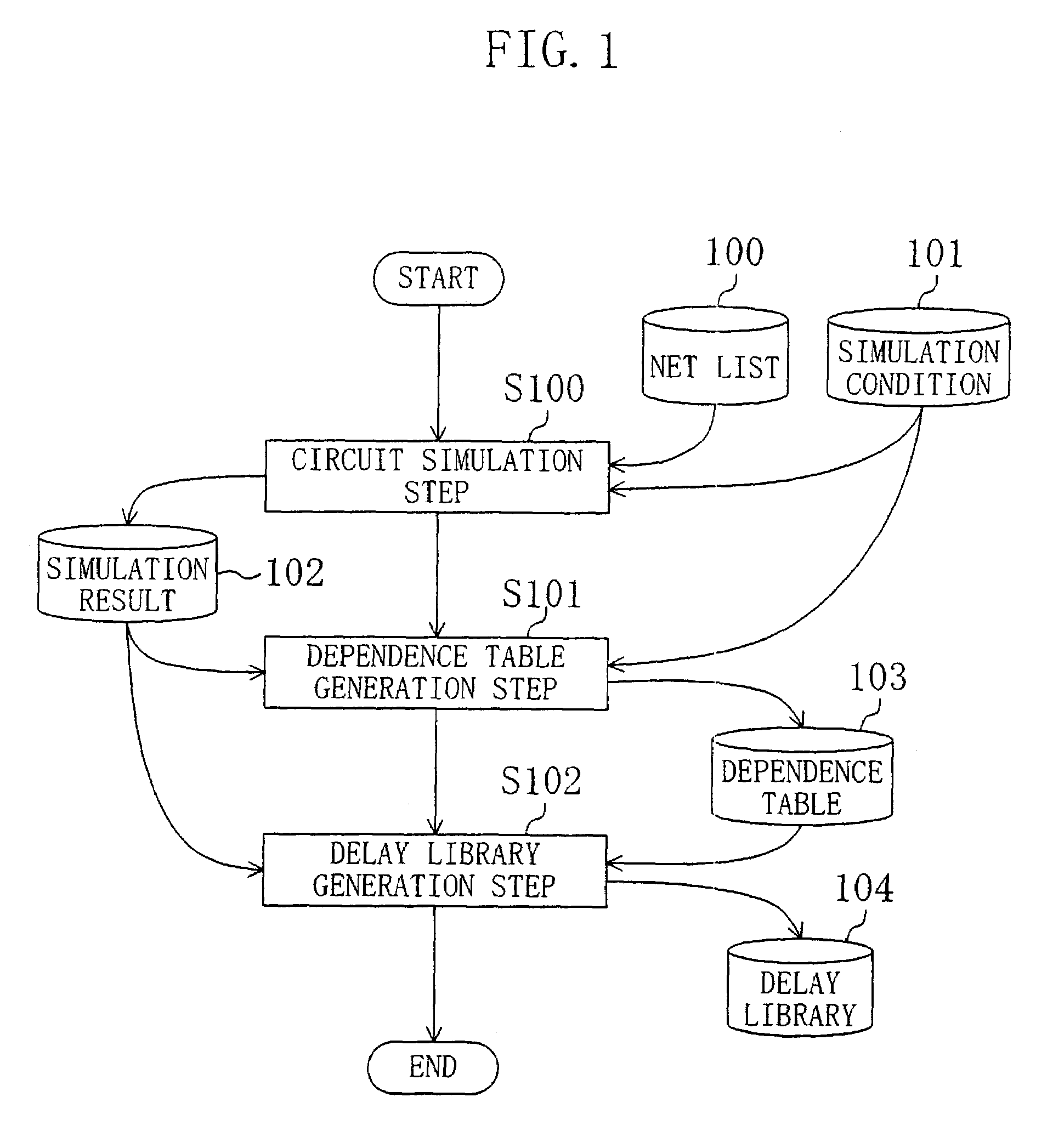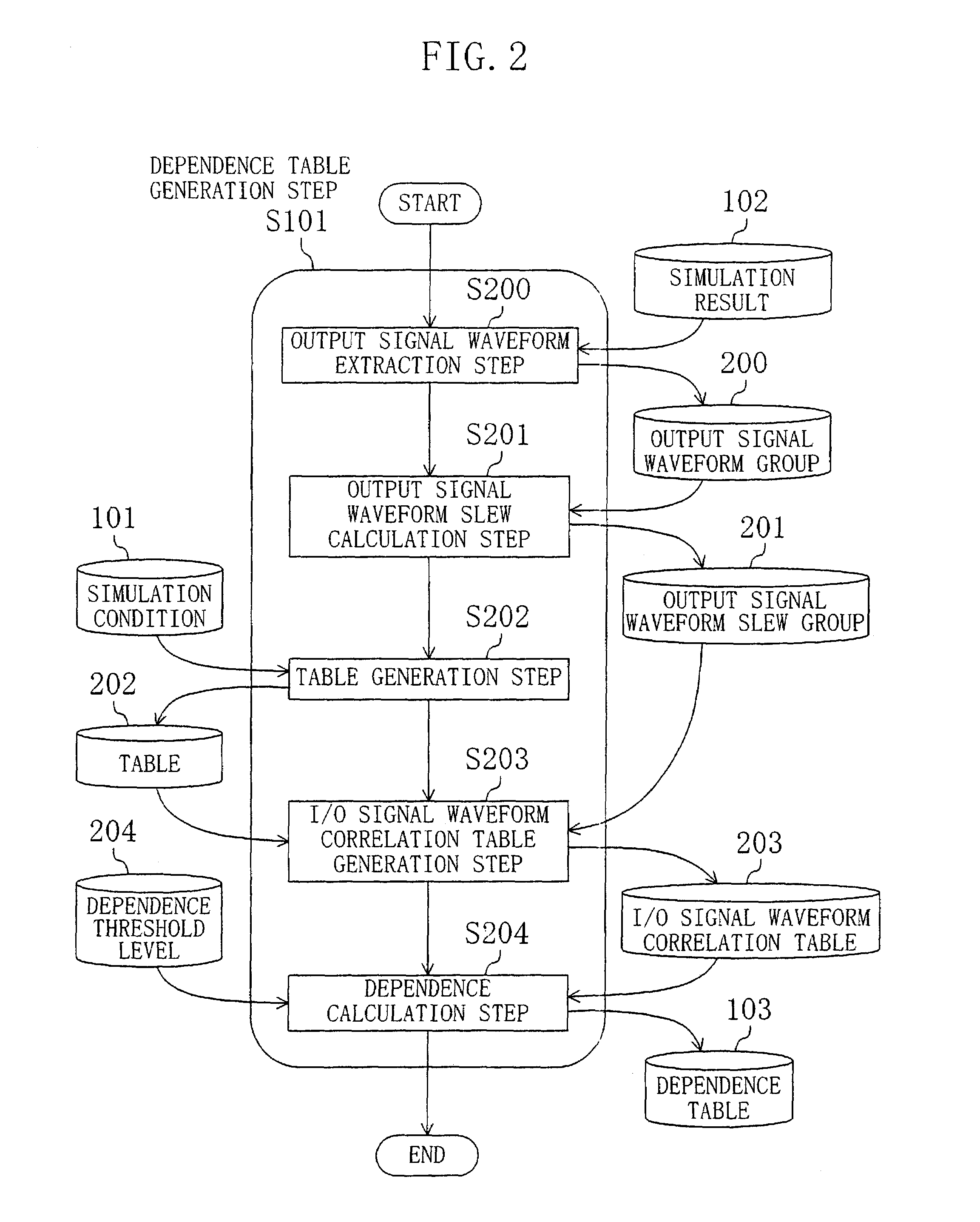Method for calculation of cell delay time and method for layout optimization of semiconductor integrated circuit
a technology of integrated circuits and delay times, applied in the field of calculation of cell delay times and layout optimization of semiconductor integrated circuits, can solve the problems of different delay calculations, poor delay calculation accuracy, and design flow backward, and achieve the effects of low accuracy, low delay calculation accuracy, and high accuracy
- Summary
- Abstract
- Description
- Claims
- Application Information
AI Technical Summary
Benefits of technology
Problems solved by technology
Method used
Image
Examples
embodiment 1
[0073]FIG. 1 shows a procedure of generating a delay library in a cell delay calculation method in accordance with a first embodiment of the present invention. Here, a technique of generating a delay library for a cell exemplarily shown in FIG. 3 will be described concretely. Shown in FIG. 3 are a cell (instance) 300, an input signal waveform group 301 of input signal waveforms that are fed to the instance 300, a load capacitance group 302 of load capacitances that are connected to an output terminal of the instance 300, an output signal waveform 303 which is one of output signal waveforms in an output signal waveform group 200, a voltage level 304 for use in linear approximation, and a linearly-approximated waveform 305 which is a linear approximation of the output signal waveform 303.
[0074]Firstly, in a circuit simulation step S100, a net list 100 at the transistor level and a simulation condition 101 for the cell 300 of FIG. 3 are input to perform a circuit simulation with a circ...
embodiment 2
[0122]A second exemplary embodiment of the present invention will be described below with reference to the drawing figures.
[0123]FIG. 11 shows a semiconductor integrated circuit layout optimization method in accordance with the second embodiment of the present invention. In accordance with the present embodiment, at least one of the input slew rate and the load capacitance of an instance is controlled when performing a timing driven layout, thereby to generate a layout suitable for the delay calculation algorithm of a delay calculation tool that is used at the time of post-layout back annotation.
[0124]In the following description, an example case will explained in which the aforesaid delay calculation algorithm is one that does not deal with the signal waveform propagation between the input and output terminals of an instance.
[0125]Referring to FIG. 11, in a layout step S1100 a net list 1101 and a delay library 1100 are first input for placement / wire routing and thereafter resistanc...
PUM
 Login to View More
Login to View More Abstract
Description
Claims
Application Information
 Login to View More
Login to View More - R&D
- Intellectual Property
- Life Sciences
- Materials
- Tech Scout
- Unparalleled Data Quality
- Higher Quality Content
- 60% Fewer Hallucinations
Browse by: Latest US Patents, China's latest patents, Technical Efficacy Thesaurus, Application Domain, Technology Topic, Popular Technical Reports.
© 2025 PatSnap. All rights reserved.Legal|Privacy policy|Modern Slavery Act Transparency Statement|Sitemap|About US| Contact US: help@patsnap.com



